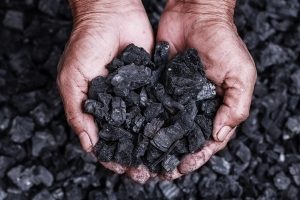How to determine penetration grade of bitumen + comparison
The hardness or softness of bitumen is an important characteristic that can be determined by its penetration grade. This trait also affects bitumen’s resistance under traffic load and at specific temperatures. In simple terms, bitumen penetration grade indicates how soft or hard a bitumen product is. If you would like to learn more about the concept of bitumen permeability, we will provide the necessary explanations for you in this article from Iran E trade.
Bitumen penetration grade
Engineers commonly use the bitumen penetration grade index in road construction and the construction industry to choose the appropriate type of bitumen for specific climates. Bitumen products with lower penetration grades are harder, while those with higher penetration grades are softer.
Bitumen penetration refers to its softness or hardness. To measure this, experts conduct a test on bitumen as follows:
Technicians use a standard needle with a specific weight to penetrate the surface of bitumen at a certain temperature (typically 25 °C) for a specified period (usually 5 seconds). They then measure the penetration depth of the needle in 0.1 mm and record it as the penetration grade of the bitumen.
For instance, if the needle penetrates the bitumen by 70-tenths of a millimetre (7 mm) during the test, the penetration grade of the bitumen is recorded as 70.
(For more information refer to the article What is Bitumen)

Terms and definitions of bitumen penetration grade
As mentioned before, bitumen with higher penetration grade is softer and is applicable in cold climates. However, lower bitumen penetration grade is harder and more suitable for warm areas. To better understand the penetration ability of bitumen, we will explain different terms and definitions related to this concept:
(For more information about price and use bitumen 85/100, refer to the article bitumen 85/100)

Pure bitumen
Pure bitumen, also known as natural bitumen or bitumen produced from the refinement of crude oil, is obtained directly from petroleum sources and does not require further complex processes for refinement or modification. These high-quality penetration grade bitumen products have stable physical and chemical properties and are utilized in various industries, including roads and construction.

Coal Tar Bitumen
One of the most important terms to understand is “penetration grade,” which specifies the softness or hardness of bitumen. The term “pure bitumen” refers to bitumen penetration grade obtained directly from petroleum sources. On the other hand, coal tar bitumen is obtained from coal distillation and exhibits high resistance to chemicals and water. However, it contains harmful compounds that can have negative effects on our health.
Coal tar bitumen
is produced through coal distillation, and due to its higher concentration of aromatic compounds, it possesses different properties compared to petroleum bitumen. Because of its high resistance to chemicals and water, coal tar bitumen is suitable for specific applications such as waterproofing and insulation coatings.
However, the presence of harmful compounds in coal tar bitumen, such as polyaromatics (PAHs) is detrimental to human health and the environment. Therefore, this has led to restrictions or bans on the use of coal tar bitumen in some countries.
(For more information about price and use bitumen 70/100, refer to the article bitumen 70/100)

The relationship between bitumen penetration grade and its viscosity
Low viscosity and high bitumen penetration grade
Bitumen penetration grade products with low viscosity are typically softer. In addition, the needles in penetration tests sink more easily into them, indicating a higher degree of penetration. These types of bitumen perform better at lower temperatures because they are more flexible and less prone to cracking.
(For information about Introduction of Pasargad oil bitumen products , refer to the article Pasargad oil bitumen)

High viscosity and low penetration grade
One of the important terminologies in measuring the penetration of bitumen is the term “penetration grade,” which specifies its softness or hardness. The term “pure bitumen” refers to bitumen obtained directly from petroleum sources. Also, the term “coal tar bitumen” refers to bitumen produced from the distillation of coal, which has high resistance to chemicals and water. However, it contains harmful compounds for health.
Bitumen penetration grade with high viscosity is usually harder, and the needle will not penetrate very deeply into it. This means they have a lower level of penetration. These types of bitumen are more resistant to deformation at high temperatures and are more suitable for tropical regions.
The viscosity and penetration of bitumen are directly related and both indicate its hardness or softness. In general, bitumen with low viscosity has a higher penetration grade (softer), while high-viscosity bitumen has a lower penetration grade (harder). This correlation helps engineers and professionals choose the right type of bitumen for different climatic conditions and applications.
(For more information about price and use bitumen 40/50, refer to the article bitumen 40/50)

Bitumen penetration grade test standards
The bitumen penetration test is conducted according to specific standards that have been established to ensure consistent conditions and comparable results. These standards encompass methods, equipment, and testing conditions. The following are the common standards for testing the grade of bitumen penetration:
(For more information aboutTypes of Bitumen in Road Construction, refer to the article Types of Bitumen in Road Construction.)

Testing bitumen softness and its common standards
When the bitumen penetration grade testing is conducted at a temperature equal to its softening point, the resulting penetration grade for all bitumen would be 800. This is why a parameter called penetration grade is defined for bitumen.
ASTM D5: “Standard Test Method for Penetration of Bituminous Materials”
AASHTO T49: “Standard Method of Test for Penetration of Bituminous Materials”
EN 1426: “Bitumen and bituminous binders – Determination of needle penetration”
IS 1203: “Methods for Testing Tar and Bituminous Materials: Determination of Penetration”

Required equipment for determining the permeability of bitumen
The test for grading bitumen penetration aims to determine the relative hardness of pure and air-blown bitumen. To perform this test, a series of testing equipment is required:

The penetrometer
A penetrometer is a device used to measure the penetration of a standard needle in bitumen under certain conditions. The machine has a mechanism to hold the needle and apply weight to it and is equipped with an accurate measurement scale to record the grade for bitumen penetration.
(For information about exported bitumen price , refer to the article Bitumen price)

Penetration needle
The penetration needle is a standard 1 mm diameter needle with a suitable length. Engineers use it to penetrate bitumen under a specified weight (100 g) within 5 seconds.

The sample container
A sample container is a container engineers use for pouring bitumen samples, with standard dimensions for proper testing.

The water bath
A water bath is for maintaining the bitumen sample at a fixed temperature of 25°C before and during the test.

Transfer dish
Transfer Dish is a container that engineers use to transfer bitumen samples to a water bath and maintain them under standard conditions. This process is also effective for testing the degree of bitumen ignition.

Thermometers
Engineers use thermometers to measure and control the temperature of the bitumen sample and water bath. They use this device to keep the temperature of the penetration grading test fixed at 25°C.

Bitumen penetration grade test Conditions
Testing Temperature: 25°C
Needle Weight: 100g
Penetration duration: 5 seconds
Keeping the sample of bitumen grade of penetration in a water bath for at least 1 hour prior to the test

Performing the test for bitumen penetration grade
Sample preparation
First, the engineers pour the bitumen sample into the testing container and the surface is flattened.

Maintaining the sample at a fixed temperature
Afterwards, they place the sample in a water bath with a temperature of 25 °C for at least 1 hour.

Device setup
The engineers calibrate the penetration meter for assessing the grade of bitumen penetration and penetrate the surface of bitumen with the needle.

Applying weight and influence
The engineers add a standard weight to the needle for performing the penetration grading test. Then, the needle penetrates the bitumen for 5 seconds.

Penetration measurement
Finally, the engineers measure the penetration depth of the needle in bitumen and record it in 0.1 mm for penetration grading.

Results and interpretation of the penetration grade test
The purpose of the penetration grading test is to determine its hardness or softness. Engineers perform this test to assess bitumen’s resistance against deformation under specific amounts of pressure at fixed temperatures. Conducting this test aids in selecting the appropriate types of bitumen for various applications.

Bitumen penetration grade and hardening
The engineers report the measurement results for the bitumen grade of penetration. For example, the penetration of 70 tenths of mm is recorded as the penetration grade of 70.

Quality assessment of penetration bitumen
Bitumen with a higher penetration grade is softer and is suitable for cold regions, whereas bitumen with a lower penetration grade is harder and more suitable for tropical regions.
These standards and methods have been developed to ensure the accuracy of the penetration grade test results and to help accurately assess and compare its physical properties.

Bitumen penetration grades available in the market
There are various grades of bitumen penetration available in the market, classified based on their hardness or softness. Below are some examples of these bitumen products and their applications:

Bitumen penetration 100/85
Definition: Bitumen penetration 100/85 is a bitumen product with a penetration grade of 8.5 to 10 mm. It has a softening point of 45-52 and will soften in heat and harden in cold temperatures.
Application: This type of bitumen is suitable for use in cold areas that require softer bitumen to better withstand temperature changes.

Bitumen penetration 100/80
Definition: Bitumen with a penetration grade of 80 to 100 mm is considered a standard penetration bitumen product.
Application: Bitumen penetration 100/80 is suitable for mild and cold climates and is commonly used in road construction. Bitumen with a grade of 100/80 is the best choice for road construction.

Bitumen penetration 100/70
Definition: Bitumen with a penetration grade of 70 to 100 mm is classified as standard bitumen penetration product.
Application: Engineers usually use 100/70 grade of bitumen penetration in areas with relatively low temperatures and cold weather. (Generally, stiffer bitumen (with lower penetration grades) is used for tropical regions, and looser bitumen (with high penetration grades) for cold areas.)

90/60 bitumen penetration
Definition: Penetration grade bitumen 90/60 refers to semi-hard and heavy bitumen with a permeability grade of 90/60.
Application: Suitable for road construction and repair in temperate climates.

70/60 bitumen penetration
Definition: Bitumen with a penetration grade of 60-70 millimetres is known as semi-hard bitumen.
Application: 70/60 bitumen penetration is suitable for use in tropical areas that require more resistance to heat. This bitumen is also useful for pasting materials.

Bitumen penetration 70/50
Definition: Bitumen with a penetration grade of 50-70 mm and a softening point of 49-59 exhibits semi-hard permeability and is considered a heavy bitumen with thermoplastic properties.
Application: The penetration bitumen 70/50 is suitable for use in hot weather conditions, as well as for repair, superstructure, and road construction.

Bitumen penetration grade 50/40
Definition: Bitumen with a penetration grade of 40-50 millimetres is relatively hard.
Application: Penetration bitumen 50/40 is suitable for hot weather and roads with heavy traffic loads that require high-flexibility asphalt.

Bitumen penetration grade 60/40
Definition: Semi-hard bitumen is bitumen with a penetration grade of 40-60 mm.
Bitumen penetration grading and classification are very helpful for selecting bitumen for different weather conditions and project types.
Application: Bitumen penetration 60/40 is more suitable for use in hot weather conditions and for high-traffic roads.

reference: wikipedia
- What Is An Oil Lubricant: Types, Applications + Production
- What Is LPG: Properties + Uses Liquefied Petroleum Gas
- What Is Petroleum Paraffin: Types + Properties And Applications
- What is Petroleum Coke: Types + Applications
- What Is Mazut: Advantages, Applications + Hazards
- What Is Diesel fuel: Types Gas oil + Applications









